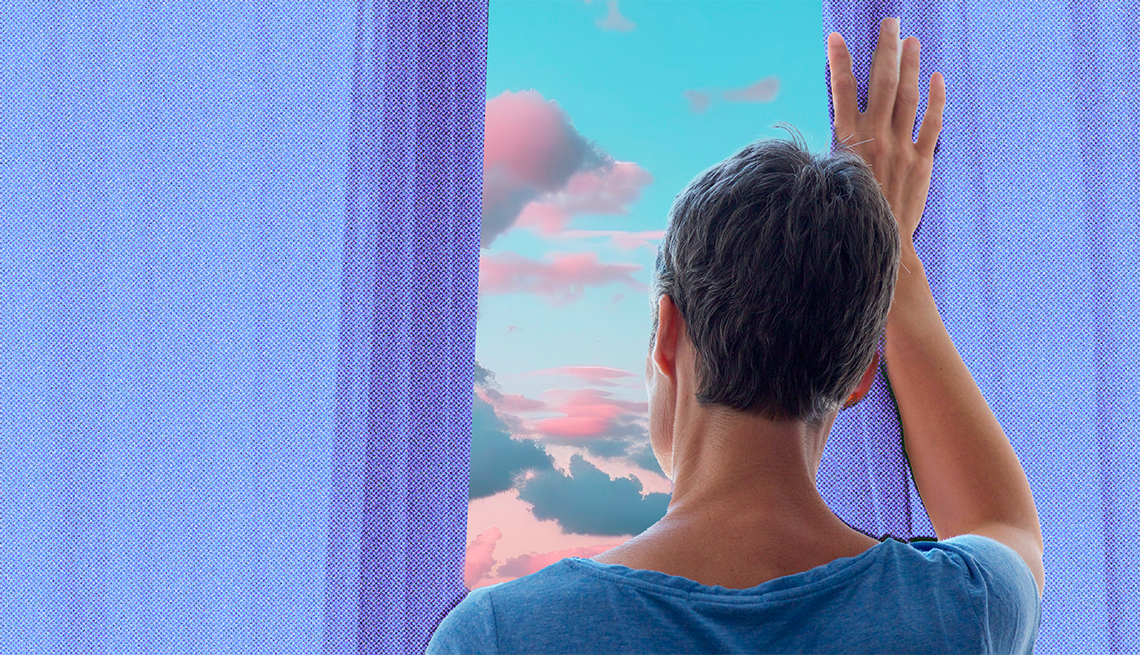Staying Fit


It may feel to many that the COVID-19 pandemic is over, but Americans are still feeling the effects of the years of isolation and anxiety.
A new report from nonprofit organization FAIR Health has found that the percentage of patients with mental health diagnoses increased across all age groups, with the largest increase seen in those age 65 and older. The organization used a database of about 46 billion private health care records — including Medicare Advantage — to examine in-network claims between 2019 and 2023. The report found that there was a 57.4 percent spike in the percentage of mental health diagnoses in those age 65 and older, and a nearly 36 percent increase among adults ages 51 to 64.


AARP Membership— $12 for your first year when you sign up for Automatic Renewal
Get instant access to members-only products and hundreds of discounts, a free second membership, and a subscription to AARP the Magazine.
After those 65-plus, the second-highest rise in mental health diagnoses were seen in those ages 19 to 30 and 31 to 44.
Symptoms of General Anxiety Disorder
- Feeling restless, wound-up or on-edge
- Being easily fatigued
- Having difficulty concentrating
- Being irritable
- Having headaches, muscle aches, stomachaches, or unexplained pains
- Difficulty controlling feelings of worry
- Having sleep problems, such as difficulty falling or staying asleep
This latest report tracks with other research that has found the prevalence of mental health conditions has risen since the start of the pandemic. It found that nearly 20 percent of privately insured patients who received medical services were diagnosed with a mental health condition in 2023, a number that is similar to estimates from the National Institute of Mental Health.
Anxiety, depression on the rise in older adults
Generalized anxiety disorder was the most common diagnosis for all Americans, including those 50 and older. For adults 65 and older, this was a change from 2021, when diagnoses for major depressive disorder — marked by symptoms of sadness and anhedonia, or an inability to experience pleasure — was slightly higher than anxiety.
- The two diagnoses were very close, however, with 6.17 percent of adults age 65 and older being diagnosed with anxiety and 6.11 percent with depression in 2023.
- In adults ages 51 to 65, 7.3 percent were diagnosed with anxiety and 5 percent with depression in 2023.
- The diagnoses among older adults of both conditions rose significantly — nearly doubling from 2019 to 2023.
Signs and Symptoms of Depression
If you have been experiencing some of the following signs and symptoms, most of the day, nearly every day, for at least two weeks, you may have depression:
- Persistent sad, anxious, or “empty” mood
- Feelings of hopelessness or pessimism
- Feelings of irritability, frustration, or restlessness
- Feelings of guilt, worthlessness, or helplessness
- Loss of interest or pleasure in hobbies and activities
- Fatigue, lack of energy, or feeling slowed down
- Difficulty concentrating, remembering, or making decisions
- Difficulty sleeping, waking too early in the morning, or oversleeping
- Changes in appetite or unplanned weight changes
- Physical aches or pains, headaches, cramps, or digestive problems without a clear physical cause that do not go away with treatment
- Thoughts of death or suicide or suicide attempts
Although some anxiety is a normal human emotion and can be useful in helping us stay safe as we worry about potential threats, it can become a problem when the fear becomes overwhelming. For people with anxiety disorder, the anxiety does not go away and can get worse over time, according to the National Institute of Mental Health.
In addition to anxiety and depression, other common mental health diagnoses in 2023 across all age groups included attention-deficit/hyperactivity disorder (ADHD), adjustment disorders (strong emotional or behavioral reactions to stress) and bipolar disorder.
Mental health issues in women vs. men
In the FAIR report, women had a higher percentage of mental health diagnoses than men in all but the youngest age groups. Although the percentage of mental health diagnoses increased for both women and men during the study period, the increase for women was greater, with 44.6 percent, compared with 32.7 percent for men.



































































More From AARP
Brain Health Resource Center
Tips, tools and explainers on brain health from AARP10 Exercises for Longevity
These will help keep you healthy longerTry These Tips for Living a Healthier Life
Small changes can add up to big mental and physical results
Recommended for You